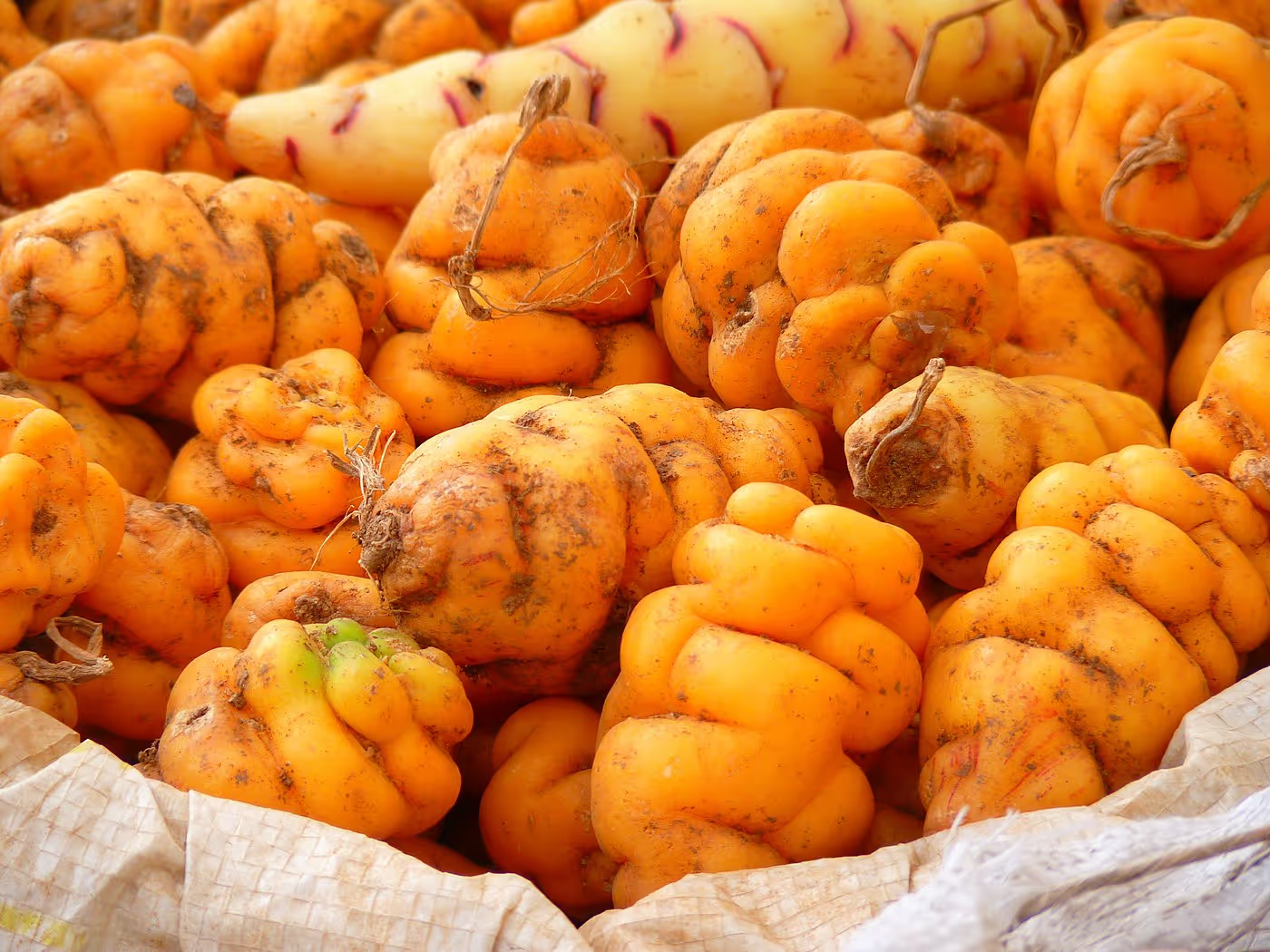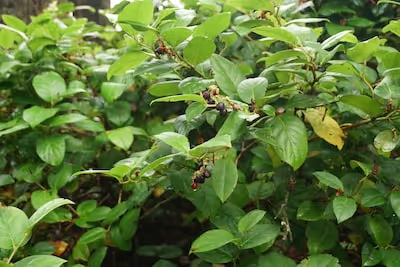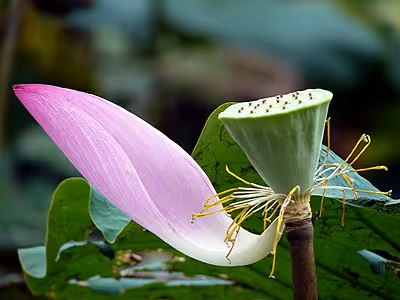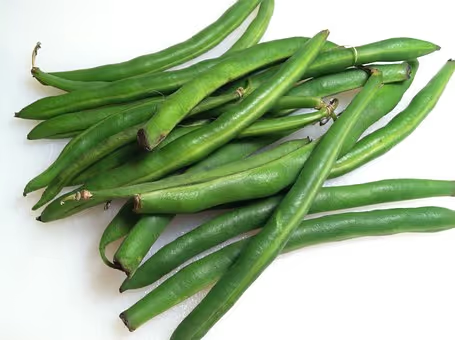Growing Oca: How to Plant, Care for, and Harvest Root Crops

Growing Oca
Growing Oca demands little fuss: plant these vibrant, nutty-tasting tubers in spring, water moderately, and mound soil around stems as they sprout. Part potato, part radish, Oca thrives easily in loose, compost-rich ground, offering bright foliage and ample harvests after autumn's first frost. Keep reading—I'll walk you through simple tips that'll help you successfully grow and enjoy this intriguing Andean vegetable.
Cheatsheet: Master Oca Tuber Cultivation
🟢 Pick & Prep Site
- Sun: Full (6+ hrs/day); tubers bulk after daylength shortens.
- Soil: Loose, well-drained, pH 5.5–7.0. Enrich with compost.
- Spacing: Plant 12–18 in (30–45 cm) apart, rows 24 in (60 cm).
- Fun fact: Oca kicks up vitamin C & iron, supports food security.
🌱 Planting Method
- Sprout (chit) tubers indoors 2–4 weeks before last frost (50–65°F/10–18°C).
- Plant after danger of last frost, 2–3 in (5–8 cm) deep, eyes up.
- Mound soil over stems like potatoes as they grow.
💧 Care & Maintenance
- Keep moist, not soggy. Mulch to conserve moisture.
- Fertilize lightly at planting, side-dress mid-season.
- Watch for slugs & aphids; handpick or use organic controls.
- Remove weeds early and often.
🛠️ Tools and Products You'll Need
- Certified oca tubers
- Garden fork or trowel
- Compost or balanced organic fertilizer
- Mulch (straw or leaves)
- Slug traps or barriers
- Buckets or baskets (for harvest)
⏳ Harvest & Cure
- Wait 2–3 weeks after frost blackens foliage—tubers size up late.
- Gently lift with fork. Handle with care—tubers bruise easily.
- Cure in sun 1–2 days; then store in cool, dark spot 1–2 weeks to sweeten.
🥗 Eat & Enjoy
- Eat raw, roasted, or boiled; rich in oxidant-fighting anthocyanins.
- Store up to 4 months at 40–50°F (5–10°C).
-
Growing Oca: How to Plant, Care for, and Harvest Root Crops
I grow oca, Oxalis tuberosa, for flavor, resilience, and the late-season thrill of unearthing candy-striped tubers. It behaves like a photoperiod diva, bulking down below only after days shorten in fall.
Climate, daylength, and the big timing trick
Oca prefers cool, bright weather with mild nights, think 50 to 70 F, 10 to 21 C. Tuberization kicks in under short days, so the real action starts after the autumn equinox.
Spring is for foliage and roots, fall is for yield. If frost comes early, use row cover or low tunnels to buy weeks of bulking time.
"Oca is short-day for tuber formation, with yields rising sharply as nights lengthen." International Potato Center, Andean Roots and Tubers.
Soil and site
Loose, stone-free loam grows straight, plump tubers. I target pH 5.5 to 6.8, with steady moisture and high organic matter, similar to a good potato bed.
Full sun in cool regions, light afternoon shade where summers push past 85 F, 29 C. Avoid waterlogging, which invites rot and sulk.
Planting calendar by latitude
- Mar to Apr in mild coastal climates, USDA 8 to 10, once soil hits 50 F, 10 C.
- Apr to May in temperate zones, USDA 6 to 7, start in trays earlier if springs run short.
- May to June in cool continental sites, USDA 4 to 5, use black mulch and low tunnels to accelerate growth.
Seed tubers, cuttings, and pre-sprouting
Buy disease-free seed tubers from specialty suppliers, or keep your own medium tubers, walnut sized, for next year. Chit them like potatoes in a bright 50 to 60 F, 10 to 16 C room until sturdy nubs form.
Tip cuttings root fast in warm media, which lets me multiply rare clones. I pot them up, then set out after danger of frost.
How to plant
Set tubers 2 to 3 inches deep, 5 to 7.5 cm, and space 12 to 18 inches, 30 to 45 cm, in rows 24 to 30 inches, 60 to 75 cm. I start in modules for a head start, then transplant with minimal root disturbance.
Mulch with clean straw or leaf mold once soil warms. The mulch buffers heat, conserves moisture, and keeps tubers covered during bulking.
Feeding and water
Oca responds to a steady, modest feed, think 2 to 3 inches, 5 to 7.5 cm, of compost and a low N, higher K side-dress at hilling. Too much nitrogen builds salad, not supper.
Target 1 inch, 25 mm, of water per week, more in sandy soil. Drip lines beat overhead spray to keep foliage clean and disease pressure low.
Hilling and canopy management
Like potatoes, oca rewards hilling, two or three times through summer. Each pass pulls soil or compost around the base to bury new stolons and prevent greening.
I trim only when vines sprawl into aisles. Keep green leaf area, that solar panel powers fall bulking.
Season extension that pays
Row cover on hoops buys 2 to 4 weeks of tuber fill after first frost, use 0.9 to 1 oz, 30 g, fabric for breathability. Cold frames work for small patches in windy sites.
In short-season areas, grow in 10 to 15 gallon, 38 to 57 L, containers, then shift pots under cover in October. It feels like smuggling treasure past the frost line.
Pests and diseases
Slugs and snails chew foliage, beer traps and copper tape help, and nightly patrols help more. Flea beetles can stipple leaves, so I rotate with non-hosts and use fine mesh netting until plants size up.
Watch for aphids that vector viruses from solanums, keep potatoes at a distance. Powdery mildew shows late in cramped, humid patches, so thin to improve airflow.
Harvest timing and sweetening
I harvest after a light frost topples the canopy, then wait 1 to 3 weeks if the soil stays above 34 F, 1 C. That pause can swell yield dramatically.
Lift carefully with a broad fork, cure tubers in sun for 3 to 7 days, bring them in at night if it freezes. Sun curing reduces oxalic tang and boosts sugars, a tradition recorded across the Andes.
"Sun-curing sweetens oca and cuts the sour edge from oxalates." National Academies, Lost Crops of the Incas.
Storage and seed-keeping
After curing, hold table tubers at 40 to 45 F, 4 to 7 C, with modest humidity and good airflow. I spread them in slatted crates and check weekly.
For seed tubers, choose firm, unblemished, egg sized pieces. Store cooler and darker to delay sprouting, then wake them for chitting in late winter.
Yields you can expect
In rich soil with a long fall, I pull 2 to 4 pounds per plant, 0.9 to 1.8 kg. The International Potato Center cites field yields ranging from 10 to 30 t per ha in favorable Andean sites.
Flavor, kitchen, and why it sells itself
Fresh-dug oca roasts like a lemony fingerling with a chestnut finish. Slice thin and pan-roast in duck fat, or steam then smash and crisp under the broiler.
Varieties to try, field-notes from my beds
- New Zealand Red bright red skin, creamy texture, mid to late, reliable under short fall days.
- Apricot yellow to orange skin, mild, bulks fast after first frost, good for roasting.
- Pink Panther candy pink with speckles, sweet after cure, moderate yield here.
- Hopin earlier bulking than most, helpful in short seasons, smaller tubers.
- Sunset multicolor blush, showy at market, needs an extra week of cover for size.
Buyer’s guide for seed tubers and gear
Order in winter from specialty growers who maintain clonal health and true-to-type labels. Ask about photoperiod response, bulb size at shipping, and sanitation practices.
Useful kit includes a broad fork, fine mesh insect netting, hoops and row cover, and stackable harvest crates. For containers, choose fabric pots with sturdy handles and at least 10 gallons, 38 L.
Troubleshooting fast
- No tubers: planted late, frost shut the show early, or too much shade, extend the fall with cover next time.
- Small, sour tubers: cure in sun longer, and reduce late nitrogen next season.
- Greened tubers: hill higher and keep mulch over exposed shoulders.
- Wilting in heat: mulch deeper and irrigate in the morning, oca hates hot, dry roots.
Companion planting and rotation
Oca tolerates partial shade, so I tuck it on the south edge of sweet corn or trellised beans. Keep it out of beds that held potatoes or tomatoes last year to reduce virus carryover.
Comparisons and alternatives for root-crop nerds
- Oca vs potato: oca is photoperiod sensitive and bulk-late, potato bulks on day-neutral cues, oca tolerates poorer soils but needs fall time.
- Oca vs ulluco: both short-day, ulluco needs wetter soil and cooler nights, oca stores drier and cooks crisper.
- Oca vs mashua: mashua climbs and shrugs off pests with peppery volatiles, oca stays compact and tastes milder.
My field method, condensed
- Chit seed tubers 3 to 4 weeks at 50 to 60 F, 10 to 16 C, bright light.
- Plant into deep, compost-rich beds, 12 to 18 inch spacing, 30 to 45 cm.
- Hill twice, feed lightly with a potassium-leaning organic fertilizer.
- Cover in fall to stretch bulking, lift after the first frost window.
- Sun-cure 3 to 7 days, then store cool and dry, save medium tubers for seed.
Field notes, sources, and why I trust them
Royal Horticultural Society classifies oca as a tender perennial grown as an annual, which matches my frost experience. Plants of the World Online confirms Oxalis tuberosa’s Andean origin and diversity, which explains its photoperiod dance here at higher latitudes.
International Potato Center provides agronomy data and yield ranges I see echoed in grower trials. The National Academies’ Lost Crops of the Incas documents sun-curing and flavor changes that I taste every season.
Market and seed-saving angles for the curious seller
Color mixes in 1 lb, 450 g, bags move fast at winter markets, especially after a tasting plate. Keep a separate stock line for seed tubers, labeled by clone and year, and rotate mother stock every few seasons from a reputable supplier.
Frequently Asked Questions About Growing Oca
What kind of soil suits oca best?
Oca favors fertile, well-draining soils rich in organic matter. Enhance clay-rich or sandy soils by mixing in compost or aged manure to promote healthy tuber formation.
What climate and temperature conditions support optimal oca growth?
Oca plants grow vigorously in mild climates, with ideal temperatures between 60°F to 75°F (15°C to 24°C). While they tolerate cooler conditions down to 28°F (-2°C), prolonged frost exposure negatively affects tuber development.
How much sunlight does oca need?
These tubers thrive best in areas offering full sun to partial shade. Partial shade proves beneficial in regions experiencing intense summer heat to prevent plant stress.
When is the right time to plant oca tubers?
Plant oca tubers in spring, shortly after the risk of frost subsides. Timing usually occurs from late March through mid-May, depending on local climate zones and weather patterns.
How deep and spaced apart should I plant oca?
Plant oca tubers at a depth of approximately 2 to 3 inches (5 to 7.5 cm), spacing each about 12 to 18 inches (30 to 45 cm) apart in rows. Give rows roughly 2 feet (60 cm) spacing to accommodate healthy growth.
What watering practices best support healthy oca plants?
Provide regular watering to keep the soil consistently moist but not waterlogged. Water deeply once or twice a week, increasing frequency slightly during hotter, drier conditions.
When and how do I harvest oca tubers?
Harvest tubers around 2 to 3 weeks after the foliage dies back naturally, typically late autumn to early winter. Gently loosen soil around plants either by hand or using a fork, lifting carefully to avoid damaging the tender tubers.
What's the best way to store oca after harvest?
Allow harvested oca tubers to dry for several days in a cool, dark spot with good air circulation. Store dried tubers in a cool, humid place at approximately 40°F to 50°F (4°C to 10°C), placing them in crates or ventilated containers for extended freshness.
Growing oca rewards patience and curiosity. Start with healthy tubers, loose soil, and steady moisture. Give your plants time—oca matures late, but the payoff is worth the wait. Mulch well, watch for frost, and let the tubers sweeten in the ground after the foliage dies back. Rotate your crops to keep soil healthy, and don’t be afraid to experiment with other root crops—try your hand at mashua or tiger nut for even more variety. Oca isn’t flashy, but it’s reliable, resilient, and downright delicious when roasted or tossed in salads. Take the time, and you’ll be pulling up something special come harvest—something that reminds you why you dig in the first place.
Homesteader's Approach to Oca Cultivation
Integrating Oca into Permaculture Systems
Utilize oca as a ground cover beneath taller crops like corn, beans, or tomatoes to conserve soil moisture, prevent weeds, and optimize small-space gardening.
Oca as Livestock Feed
- Feed nutrient-rich oca leaves to poultry, rabbits, or guinea pigs for supplementary vitamins and minerals.
- Reserve smaller tubers as winter fodder for goats or pigs, maximizing self-sufficiency.
Extending Oca's Storage Life Naturally
Air-cure harvested tubers in indirect sunlight for 1–2 weeks to toughen skins, then store layered in sand or sawdust at 40–50°F (4–10°C), extending shelf-life up to 5–6 months.
Preservation Techniques for Year-Round Oca
- Pickling: Slice tubers thinly, pickle in apple cider vinegar, herbs, and spices; preserves crispness and flavor.
- Dehydrating: Thinly slice tubers, dry at 125°F (50°C) until brittle; grind for soups, stews, or flour additive.
Nutritional Benefits for Homestead Health
Oca tubers offer vitamin C (40mg/100g), iron, potassium, and dietary fiber, contributing significantly to immune support and dietary diversity on self-sufficient homesteads.
Find out which plants will thrive in your garden!
Answer a few fun questions and get custom plant recommendations perfect for your space. Let’s grow something amazing together!

start your season





